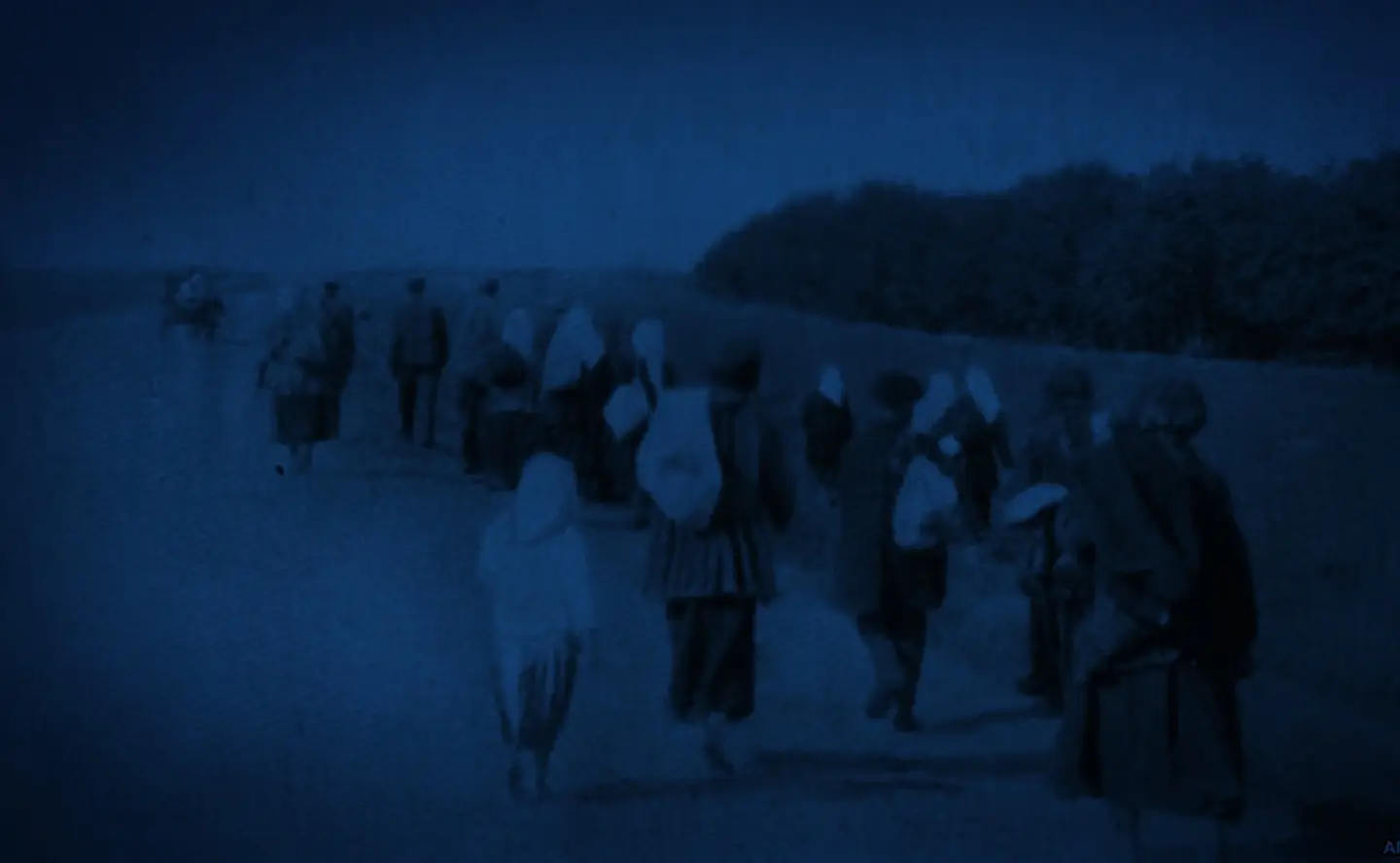What was the Holodomor, and what does the word “Holodomor” mean?
A few years after Ukraine was forcibly incorporated into the Soviet Union, the Communist regime of Soviet dictator Joseph Stalin embarked on a campaign to break the resistance of the Ukrainian people, especially its fiercely independent farmers. Its plan: engineer and brutally enforce a man-made famine, and starve Ukrainians into submission. The result: in the land called the breadbasket of Europe, millions of men, women and children starved to death. This horrendous act of genocide against the Ukrainian people is known as the Holodomor –murder by starvation.
Stalin orchestrated the Holodomor on the heels of his policy of collectivization. Under this policy, all privately owned land was expropriated, and farmers were forced into collective farms. More than one million farmers who resisted collectivization were removed from their homes, stripped of their possessions, and executed or exiled to distant labor camps. The government imposed exorbitant grain quotas on the collective farms and confiscated all foodstuffs to ensure that nothing would be left to feed the people. Armed units surrounded the stricken territories, preventing people from leaving in search of food. Those who tried to flee were forced back to their homes, where they inevitably died. Those who attempted to hide grain or other food were executed. Withholding or stealing grain, considered the “property” of the Soviet Union, became a crime punishable by death.
Stalin’s attempted extermination of Ukrainians was not restricted to farmers. He also embarked on a program of cultural genocide known as “Russification” to destroy Ukraine’s language and culture, and eradicate its historical memory. Writers, scholars, artists, clergy and teachers were arrested and executed. Most of Ukraine’s intellectuals were killed in these purges, and Ukraine’s development as a nation was crippled for generations.
No less an authority than Raphael Lemkin – the attorney who coined the word ‘genocide’ and authored the 1948 United Nations Convention on the Prevention and Punishment of the Crime of Genocide – cited the Ukrainian Holodomor as a prime example of this crime against humanity. The Holodomor, he said, is “the classic example of Soviet genocide, its longest and broadest experiment of Russification – the destruction of
the Ukrainian nation…”
OTHER VOICES:
“It is undeniable that the Ukrainian peasantry were the principal victims of the famine of 1932-33, and that this ‘assault’ was preceded in 1929 by several offensives against the Ukrainian intelligentsia, who were accused of ‘nationalist deviations’…”
—Nicolas Werth, The Black Book of Communism
In 1998, the U.S. Commission on the Ukraine Famine concluded in its findings that
“Joseph Stalin and those around him committed genocide against Ukrainians
in 1932-1933.”
“‘The classic case of Soviet genocide,’ Raphael Lemkin would call it…[…] The Soviet Union pitched itself in opposition to the racism of Nazi Germany, and even America. There’s a Stalin-era film, which I’m dying to see, in which the American heroine gives birth to a black child and finds peace in the Soviet Union. But it is hard not to look at Ukraine, or look at dekulakization, or look at the Polish operation, or the Latvian operation, and not see– if not racism– a lethal ethnic bias.”
—Ta-Nehisi Coates, The Atlantic
“…Stalin’s policy of collectivisation, in which peasants were driven off their land and on to collective farms, caused mass starvation, epidemics, psychological disturbances and cannibalism. According to the concept’s inventor, the Polish-Jewish legal scholar Raphael Lemkin, the Holodomor was ‘genocide’”
—Gavin Jacobson, Financial Times
“The back story: While Lenin was content, for a time anyway, to allow the new Soviet Union to develop a ‘mixed economy’ with state-run industry and peasant-owned private farms, Stalin decided to ‘collectivize’ the grain- producing breadbasket that was the Ukraine. His agents seized all land from the peasants, expelling landowners and placing loyal ideologues with little agricultural experience in charge of the newly collectivized farms, which began to fail miserably. And to fulfill Five-Year Plan goals, he seized all the grain and food that was grown in 1932 and 1933 to feed the rest of Russia and raise foreign capital, and in doing so left the entire Ukrainian people with nothing to eat—except, sometimes, themselves.”
—Ron Rosenbaum, Slate
“But famine was only half the story. While peasants were dying in the countryside, the Soviet secret police simultaneously launched an attack on the Ukrainian intellectual and political elites. As the famine spread, a campaign of slander and repression was launched against Ukrainian intellectuals, professors, museum curators, writers, artists, priests, theologians, public officials and bureaucrats. Anyone connected to the short-lived Ukrainian People’s Republic, which had existed for a few months from June 1917, anyone who had promoted the Ukrainian language, or Ukrainian history, any9ne with an independent literary or artistic career, was liable to be publicly vilified, jailed, sent to a labour camp or executed.”
—Anne Applebaum, Red Famine: Stalin’s War on Ukraine
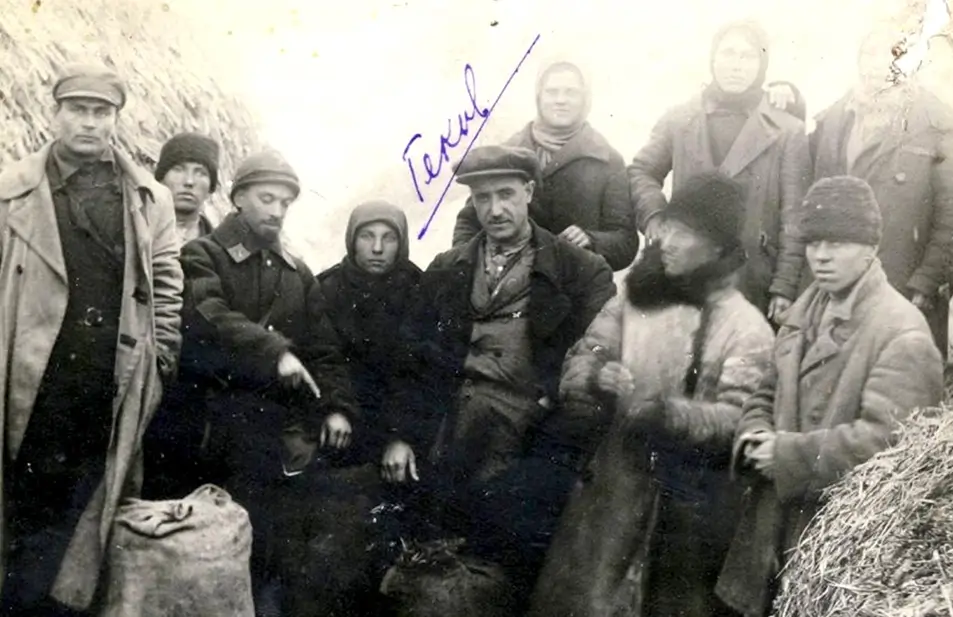
How many people died?
Determining the precise number of the genocide-famine’s victims remains a difficult if not impossible task. Suppressed population censuses, lack of death records, official denials, and forbidden access to government records were formidable stumbling blocks to get to the truth. Stalin and his henchmen Lazar Kaganovich and Nikita Khrushchev talked of as many as 10 million victims. But with some archives opening up following the USSR’s dissolution and Ukraine’s independence in 1991, demographers, historians and other scholars are revisiting the question of Holodomor’s death toll. A recent estimate cites 4-5 million; 7 million remains the consensus. Everyone agrees that at the height of the famine-genocide close to 30,000 Ukrainians were dying every day. In the end, the fact remains that millions of Ukrainians were purposely starved to death, making the Holodomor one of the biggest crimes in the history of mankind.
OTHER VOICES:
“At least 4 million Ukrainians died, victims not of a natural catastrophe but a carefully calculated crime. Ukraine had resisted Bolshevism in the civil war of 1918-1920, and when Stalin collectivised Soviet agriculture, that vast land, the bread basket of the USSR, became his target.”
Nigel Jones, The Guardian
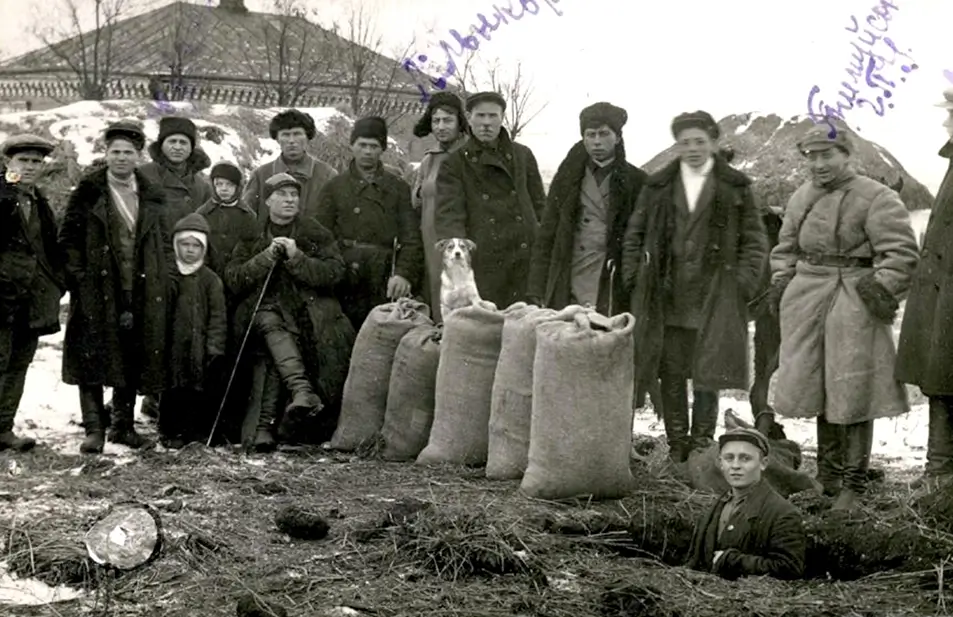
What did world leaders do at the time to try to save people from the famine?
The USSR continued to export confiscated grain and other foodstuffs from Ukraine and tried to conceal the famine from the world. In fact, many world leaders knew about the famine thanks to diplomatic and journalistic reports and did nothing.
“Throughout the following summer and autumn, Ukrainian newspapers in Poland covered the famine, and Ukrainian politicians in Poland organized marches and protests. The leader of the Ukrainian feminist organization tried to organize an international boycott of Soviet goods by appealing to the women of the world. Several attempts were made to reach Franklin D. Roosevelt, the president of the United States. None of this made any difference.
The laws of the international market ensured that the grain taken from Soviet Ukraine would feed others. Roosevelt, preoccupied above all by the position of the American worker during the Great Depression, wished to establish diplomatic relations with the Soviet Union. The telegrams from Ukrainian activists reached him in autumn 1933, just as his personal initiative in US-Soviet relations was bearing fruit. The United States extended diplomatic recognition to the Soviet Union in November 1933.”
“The Soviet Union didn’t ask for assistance in 1932 and 1933 partly because Stalin didn’t want the world to know that collectivization, which he was trumpeting as a great triumph – he didn’t want people to know that it was a real disaster. He didn’t want people inside the Soviet Union to know and he didn’t want people abroad to know.
I think that for Putin, Ukraine represents a challenge a little bit the way Ukrainian sovereignty was a challenge for Stalin. But, of course, the second reason was that he was using this general famine to target Ukraine. He wasn’t interested in saving people. He wanted the peasants, as a group, to be weakened and he didn’t want people to survive. So there was no effort to collect international aid.”
—Anne Applebaum, RFE/RL
“Other international factors worked against the famine’s receiving the international attention it deserved. Official British, Italian, German, and Polish documents…show that, although diplomats were fully aware of the famine and reported on it in detail, governments chose to remain silent. The Holodomor took place during the depths of the great Depression and in a period of profound political crisis in Europe, which saw the rise of fascism and the coming to power of of Adolf Hitler in Germany in early 1933.”
—Bohdan Klid and Alexander J. Motyl, The Holodomor Reader
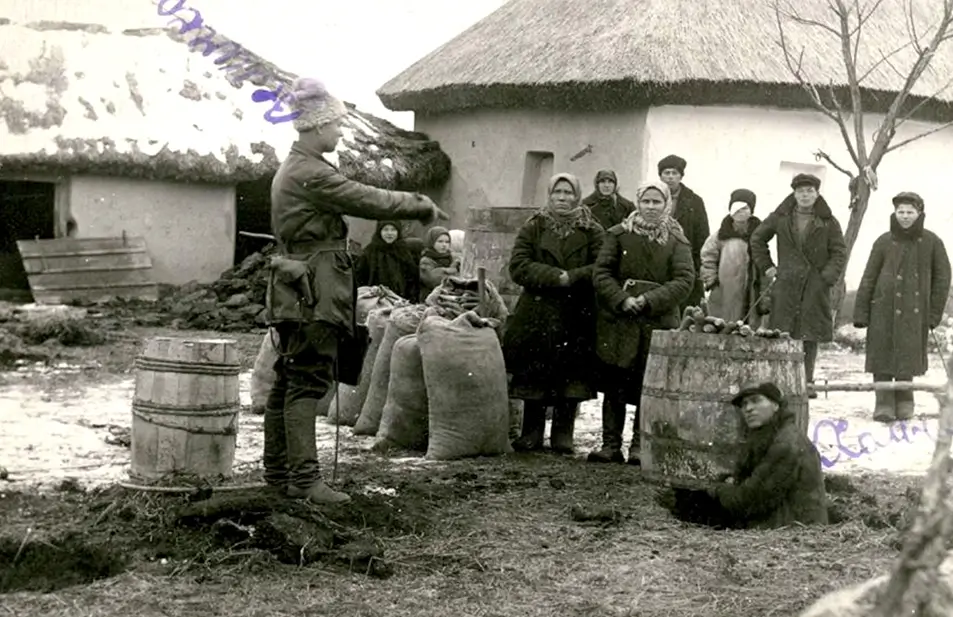
Ron Rosenbaum, Slate
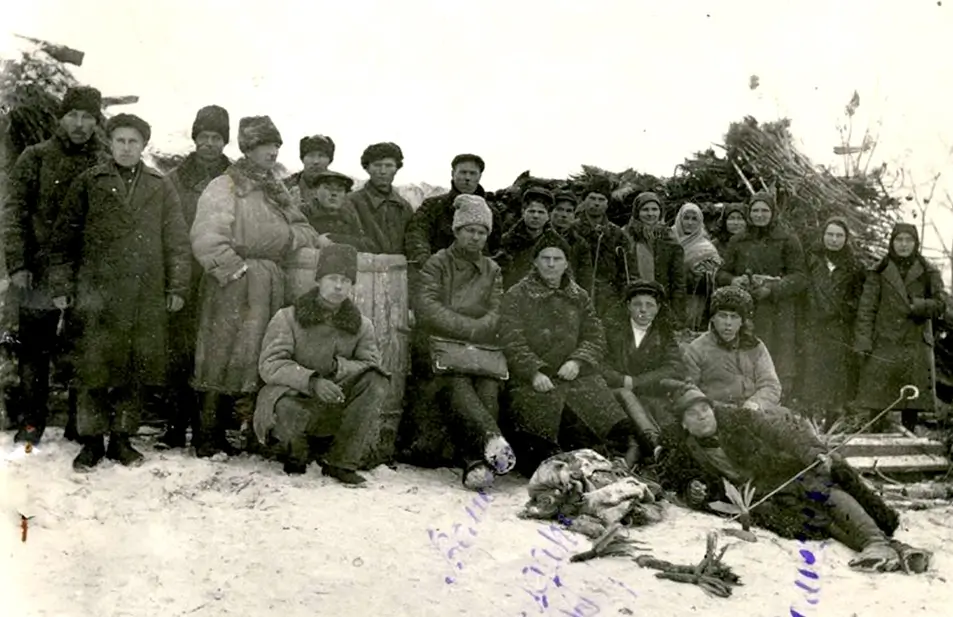
How did the press cover the famine? Why were some Western journalists complicit in helping the Kremlin cover-up the famine?
A number of Western journalists wrote about the famine in 1933-1935, but the tone was set by New York Times correspondent, Walter Duranty, who purposely misled the public about the nature of the famine.
“[Gareth] Jones’s articles [about the famine], written on the basis of [his] notes [during an illegal reporting trip to the famine stricken regions of Ukraine], caused a small sensation. So did the press conference he held in Berlin after he left the USSR. His descriptions of the famine, there and in print, angered the Soviet Foreign Office, which subsequently banned all Western journalists from traveling outside Moscow without permission. His comments also came to the attention of Walter Duranty of The New York Times, at that time the most famous foreign correspondent in Moscow. Duranty denounced Jones by name in an article entitled ‘Russians Hungry, But Not Starving,’ one of several pieces he wrote that argued against the use of the word ‘famine’ with reference to the USSR. The motives of Duranty, who told diplomats in private that the famine was real, have never been clarified. He may have wanted to preserve his contacts and connections in Moscow. Or having defended Stalin’s policies in the past, he may have wanted to protect his professional reputation. His journalism had won him a Pulitzer Prize in 1932.
One or two other Western journalists did report on the famine. Malcolm Muggeridge wrote several articles in the Manchester Guardian; Georges Simenon, the Belgian crime writer, also published an account of the few strange days he spent in starving Odessa, where he was told that the malheureux he saw begging in the streets were not to be pitied, for they were people who had not adapted to the regime: ‘There is nothing for them but to die.’ But Duranty’s voice was more influential, and Soviet efforts to suppress the truth were sustained for many years. The story of the famine didn’t exactly disappear, but it faded from view. So did Gareth Jones.
And yet in the past two decades, the fate of the two journalists has been slowly reversed. Duranty’s work has become controversial; in 2003, the Pulitzer committee debated whether to retrospectively withdraw his prize. Jones, by contrast, has been made the subject of Ganache’s 2013 biography, a BBC documentary in 2012, and exhibitions at Cambridge University and in London.”
—Anne Applebaum, The New York Review of Books
“…Duranty reported on the famine in ways that belittled its scope and significance, thereby reinforcing the Soviet policy of silence and denial. Part of the reason for such biased reporting was the ubiquity of pro-Soviet sentiments among liberal and left-leaning Western intellectuals and journalists in the 1930s.”
—Bohdan Klid and Alexander J. Motyl, The Holodomor Reader
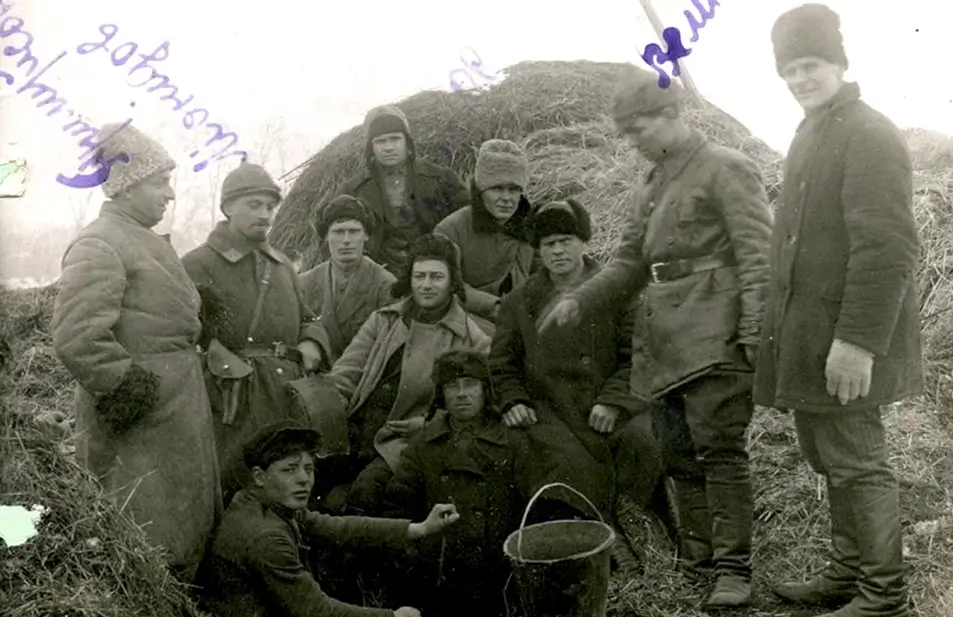
What disinformation does the Kremlin spread about the Holodomor?
Russia has long mastered the art of propaganda and fake news, and continues to deny the existence of the Holodomor.
Some examples:
“…the whole picture in the Ukraine was not that of a nearly complete collapse with a smell of a nation-wide tragedy as it is portrayed by the most zealous anti-Soviet writers in the media in Canada. On the contrary, the atmosphere of vigorous work and unparalleled enthusiasm prevailed as the nation embarked on great economic and social programs, Collective farming proved extremely effective as 22.3 million tons of harvest were harvested in 1933.
As to the alleged decrease in the Ukrainian population, the argument is as groundless as the whole man-made-hunger campaign. The fact is that in 1929 the Ukraine had a 30.million population. Throughout 1932-1933 the population remained at a level of 32 million, which has nothing to do with the widely circulated and televised lie that some 10 million Ukrainians were starved to death.”
— News release, Press Office of the USSR Embassy in Canada, 28 April 1983. Excerpted from The Holodomor Reader





